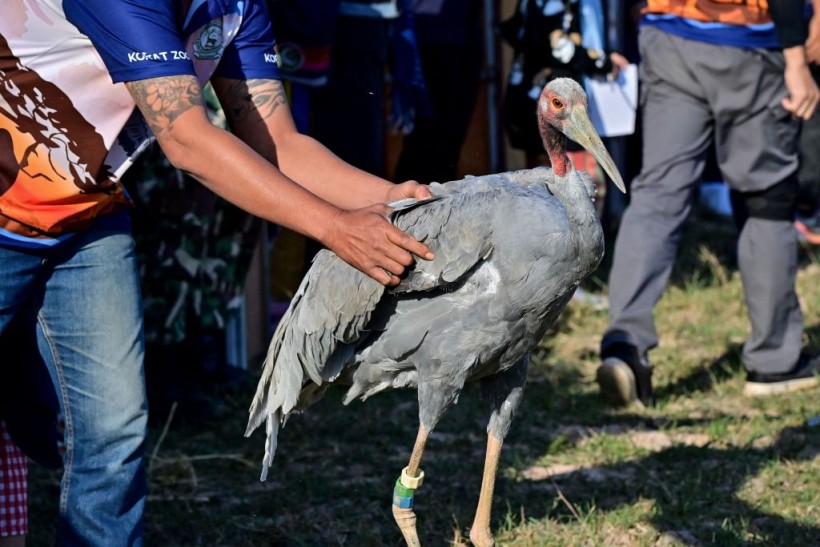New Zealand is a country that is known for its rich and diverse wildlife, especially its birds. The country has more than 300 species of birds, many of which are endemic, meaning they are found nowhere else in the world.
However, New Zealand also has a tragic history of bird extinctions, as many of its native birds have been wiped out by human activities, such as hunting, habitat destruction, and the introduction of invasive predators.
To raise awareness and appreciation of New Zealand's birds, a conservation group organizes an annual contest to find the country's most popular feathered friend.
This year, the contest has a twist: it includes five extinct species on the ballot.
Why include extinct birds on the ballot?
 (Photo : LILLIAN SUWANRUMPHA/AFP via Getty Images)
(Photo : LILLIAN SUWANRUMPHA/AFP via Getty Images)

The contest is called the Bird of the Century, and it is run by Forest & Bird, a charity that works to protect and restore New Zealand's natural environment, as per Phys.org.
The contest aims to celebrate the centenary of Forest & Bird by finding the bird that has captured New Zealanders' hearts over the last 100 years.
The contest also hopes to draw attention to the plight of endangered birds and inspire people to take action to save them.
The contest has put 75 species on the ticket for this year's vote, of which five are thought to be extinct in New Zealand. They are:
Huia
The huia, a black bird with a long-curved bill and white-tipped tail feathers. The huia was a sacred bird for the Maori, who used its feathers as ornaments and symbols of rank. It was also known for its beautiful song and ability to mimic other sounds.
The last confirmed sighting of the huia was in 1907.
Laughing Owl
The laughing owl, also known as the whekau, a large brown owl with yellow eyes and white spots. The laughing owl was named for its distinctive call, which sounded like a series of shrieks or laughs. It was a nocturnal hunter that preyed on rodents, birds, lizards, and insects.
The last official record of the laughing owl was in 1914.
Piopio
The piopio, also known as the thrush or the New Zealand oriole, is a songbird with olive-green plumage and orange-yellow patches on its wings and tail. The piopio had a melodious voice and a varied repertoire of songs and calls. It was a frugivorous bird that fed on fruits, berries, and seeds.
The last confirmed sighting of the piopio was in 1970.
South Island Kokako
The South Island kokako, a forest bird with blue-grey plumage and orange wattles on its cheeks. The South Island kokako was related to the North Island kokako, which is still alive but critically endangered.
It had a powerful voice that could be heard over long distances and sang in duets with its mate or other kokako. The South Island kokako was a herbivorous bird that ate leaves, buds, flowers, and fruits.
The last accepted record of the South Island Kokako was in 1967.
Bush Wren
Also known as the mātuhituhi in the Māori language, this bird was a very small and almost flightless bird that was endemic to New Zealand.
It had three subspecies on each of the major islands of New Zealand, the North Island, South Island, and Stewart Island and nearby smaller islands.
The species disappeared gradually after the introduction of invasive mammalian predators, last being seen on the North Island in 1955 and the South Island in 1968.
Forest & Bird decided to include these extinct species on the ballot to honor their memory and to remind people of the biodiversity that has been lost due to human actions.
The competition also hopes that by featuring these extinct species, people will become more aware of the threats facing living species and will take steps to prevent further extinctions.
Also Read: Dodo Birds Weren't as Dumb as You Think, Study Finds
Why does voting for birds matter for conservation?
Voting for birds matters for conservation because it helps raise awareness and appreciation of New Zealand's unique and diverse avian fauna, as per WN.
By learning more about the birds and their stories, people can develop a stronger connection and empathy with them.
This can motivate people to take action to protect and restore the birds and their habitats, such as by supporting conservation organizations, creating bird-friendly gardens, or joining citizen science projects.
Voting for birds also helps generate valuable data and information on the status and trends of bird populations in New Zealand.
By analyzing the voting patterns and preferences, researchers and conservationists can identify which species are popular or unpopular, which regions are more or less diverse, and which factors influence people's choices.
This can inform conservation strategies and policies to prioritize and target the most threatened or neglected species and areas.
Voting for birds also has benefits for people's well-being and happiness. By engaging in a fun and meaningful activity, people can improve their mental health and mood.
By connecting with nature and other bird lovers, people can enhance their social and emotional skills. By contributing to a worthy cause, people can increase their sense of purpose and fulfillment.
Related article: Dodo Might Be Resurrected After Scientists Examine Extinct Bird's Dna For the First Time
© 2024 NatureWorldNews.com All rights reserved. Do not reproduce without permission.

![Tsunami Hazard Zones: New US Map Shows Places at Risk of Flooding and Tsunamis Amid Rising Sea Levels [NOAA]](https://1471793142.rsc.cdn77.org/data/thumbs/full/70325/280/157/50/40/tsunami-hazard-zones-new-us-map-shows-places-at-risk-of-flooding-and-tsunamis-amid-rising-sea-levels-noaa.jpg)



